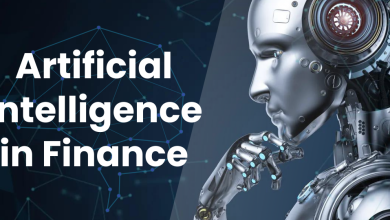
Attackers don’t need zero-days to break into modern systems, but instead rely on the steady stream of known flaws that ride along in open-source libraries and container images. Each weak dependency is another open door, and with thousands of them in every release, defenders can’t close them all in time.
Software delivery only makes the problem worse, when each project pulls in more libraries, images and packages than any team can realistically check. Under that pressure, flaws slip through at scale, giving attackers the leverage they need to move quickly once code hits production.
AI-driven systems can detect insecure code patterns, remove flawed dependencies from container images, and flag risky libraries at the build stage. Automating these safeguards prevents vulnerabilities from being baked into releases and gives teams a safer baseline before software ships.
Why Manual Security Falls Short
Modern applications depend on thousands of packages, libraries and images that no team can fully review through manual processes. Each release introduces fresh code, new dependencies and new risks, with vulnerabilities often remaining hidden until they are exploited, leaving teams with two choices: patch on the fly or accept the exposure. Neither scale, but why?
Patching often drains weeks of valuable engineering time and diverts focus from innovation, while leaving vulnerabilities unaddressed opens the door to attackers, which creates a situation where both paths keep security stuck in a reactive stance.
AI’s security advantage lies in its ability to continuously scan code, containers and packages, cross-checking them against trusted vulnerability databases and apply automated fixes before release. Unlike manual review, the AI-driven analysis scales effortlessly, assessing thousands of images in the time it would take a human to inspect just a few.
When remediation is delayed until after deployment, the costs rise sharply. Research shows that fixing a single bug post-release can exceed $7,600, not counting downtime, customer impact, and compliance exposure. By addressing issues early, teams avoid costly firefights, reduce analyst fatigue, and free developers from disruptive late-night patch cycles.
How AI Hardens Code for Regulated Industries
Regulated industries face an added layer of pressure as auditors who demand clear evidence that vulnerabilities are properly managed. Manual processes often leave gaps that become audit findings, while AI eliminates those weaknesses by producing hardened, compliant artifacts from the start. Compliance teams spend less time digging through backlogs and more time validating that standards are consistently met.
Healthcare, financial services and government agencies gain the most here. They can demonstrate flaws were fixed before software reached production instead of relying on long lists of post-release patches. Enterprises end up with fewer risks to manage and cleaner records to show auditors.
Cleaner compliance records matter to regulators, but the real payoff comes inside the organization, where AI reduces the burden on analysts and developers.
Breaking the Cycle of Burnout With Upstream Fixes
Analysts who chase noise every day eventually begin to tune it out, and developers stuck in endless patch cycles can start cutting corners. Applying AI upstream breaks that pattern, freeing up analysts to pay attention because the alerts that do arrive are worth investigating.
Developers release code with more confidence, while leaders rebuild trust with customers and regulators because recurring issues disappear.
One of the security leads told me their patch cycles shrank from weeks to days after adopting AI-driven hardening in the build process. Developers finally had space to focus on new features, and analysts could pursue suspicious behavior instead of drowning in a backlog.
Even with all these benefits, it’s important to keep in mind that AI was never designed to replace human judgment. What AI does well is take over repetitive scanning, comparing and fixing, leaving people to decide which risks require deeper investigation, where policies should apply and how to respond when behavior falls outside expected patterns.
Splitting the workload in this way creates sustainable work. Machines manage repetitive tasks, and people focus on strategy and creative problem-solving. Teams stay engaged longer, and burnout becomes less common.
AI as the Baseline for Secure Delivery
Software will only grow more complex, and attackers will continue to exploit weak links in the supply chain, and manual methods can’t scale to meet that reality. AI offers a way out by moving remediation to the start of the process and reducing the pressure on teams downstream.
For businesses, it’s important to remember that trust often decides who wins the next customer. Too often teams are met with a product that isn’t fully developed or tested for vulnerabilities. A release that arrives hardened reaches customers without the baggage of urgent patches, and that reliability stands out.
The companies that adopt this approach are protecting analysts from drowning in false positives and giving developers the breathing room to focus on features instead of firefighting. That outcome is what makes AI valuable: not just fewer vulnerabilities, but stronger teams ready to handle the risks that really matter.
About the Author
Nilesh Jain is a seasoned professional with over two decades of industry experience. He is the Co-Founder and CEO of CleanStart, a Singapore-based cybersecurity company that is advancing software supply chain security on a global scale. He spearheads the organization’s overall vision, business strategy and operations, while also building strong relationships with the investors and shaping expansion into international markets.




